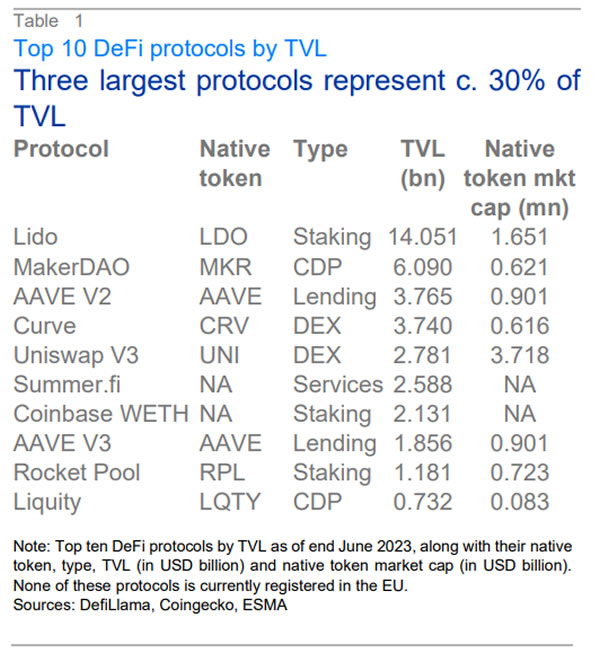Decentralized finance (DeFi) is yet to pose a meaningful risk to overall financial stability but does require monitoring, according to the European Union’s financial markets and securities regulator.
On Oct. 11, the European Securities and Markets Authority (ESMA) released a report titled Decentralized Finance in the EU: Developments and Risks. Aside from discussing the nascent ecosystem's benefits and risks, the regulator concluded it is yet to pose a sizeable risk to financial stability.
“Crypto-assets markets, including DeFi, do not represent meaningful risks to financial stability at this point, mainly because of their relatively small size and limited contagion channels between crypto and traditional financial markets.”
The total crypto market capitalization is just over $1 trillion, and DeFi total value locked is a mere $40 billion, according to DefiLlama. Comparatively, the total assets of financial institutions in the EU amounted to around $90 trillion in 2021, according to the European Commission.

The report said that the total crypto market is about the same size as the EU’s twelfth largest bank or 3.2% of the total assets held by EU banks.
The ESMA also looked into several crypto contagions of 2022, including the collapse of the Terra ecosystem and FTX, noting that this crypto “Lehman moment” still had “no meaningful impact on traditional markets.”
Nevertheless, the regulator observed that DeFi has similar traits and vulnerabilities to traditional finance, such as liquidity and maturity mismatches, leverage, and interconnectedness.
It also highlighted that although investors’ exposure to DeFi remains small, there are still serious risks to investor protection due to the "highly speculative nature of many DeFi arrangements, important operational and security vulnerabilities, and the lack of a clearly identified responsible party."
It cautioned that this could “translate into systemic risks if the phenomenon were to gain significant traction and/or if interconnections with traditional financial markets were to become material.”
Furthermore, the report identified a “concentration risk” associated with DeFi activities.
“DeFi activities are concentrated in a small number of protocols,” it noted adding that the three largest ones represent 30% of the TVL.

“The failure of any of these large protocols or blockchains could reverberate across the whole system,” it said.
The regulator is paying much closer attention to DeFi and crypto markets following the publication of its second consultative paper on the Markets in Crypto Assets (MiCA) regulations earlier this month.
 cointelegraph.com
cointelegraph.com